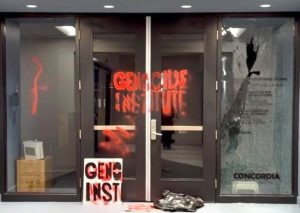There are many ways to measure the strength of a community.
We can count individuals: affiliation rates, Jewish knowledge, attachment and attitudes. Demographic surveys such as the Pew study describe the community through this lens.
We can assess the strength of institutions: the number of students enrolled in day schools or attending Jewish summer camps, membership rates at synagogues or donations to federations.
Both of these types of measures offer important snapshots of the current state of affairs. But in looking to the future, they offer little more than the ability to extrapolate current trends.
A stronger predictor of the Jewish future is the strength of communal leadership.
READ: REKINDLING THE LIGHT OF JEWISH SOCIAL JUSTICE
Late last month, the boards of five agencies, each serving large networks of American Jewish day schools, voted to dissolve themselves and merge into one new entity. In a bold move, Pardes, serving Reform day schools; PEJE, the Partnership for Excellence in Jewish Education; the Schechter Day School Network, representing Conservative schools; RAVSAK, strengthening community day schools; and the Yeshiva University School Partnership, serving modern Orthodox schools, all committed to folding their own structures into a new, unified Jewish day school organization. Together they serve nearly 100,000 students in over 375 schools.
It’s an audacious decision, breaking down silos and redeveloping the landscape of agencies serving day schools. It’s also risky. The new organization will have to overcome barriers to change and decades-old entrenchments, and bring together what can be disparate elements of the field.
This is the type of bold leadership that foretells a strong community. The five agencies each had its own area of expertise. Some were good with curriculum and others at placing staff, some focused on professional development and others on integrating technology. The boards recognized that combining efforts will allow these strengths to be accessed by all schools. Moreover, they saw duplication. The merged entity will facilitate streamlining of services, fundraising, staffing, advocacy, marketing and other areas.
It’s this view of a unified field that marks the critical leadership lesson of the merger. Too often we fall into the trap of the status quo, perpetuating the functions and structures that have been in existence for decades. At times, these entrenched positions lead to territorialism, with organizations – of all types – vying for constituents, donors or members. While individual organizations often seek to grow their piece of the pie, today’s reality necessitates that the pie itself will grow. The new merged entity will develop a unified voice for day school education, a single repository of data and knowledge, and a strong voice to advocate for and represent the field.
The decision to merge will surely benefit day schools, but the lessons learned should be applied more broadly.
How could our community benefit from greater collaboration across agencies? Are the denominations that once stood at the centre of Jewish communal life still relevant to the institutional needs of a new generation? Are our fundraising organizations – many of which tap the same donors to meet similar philanthropic needs – optimized to raise the funds necessary to fuel our community’s growth? Is the constellation of communal agencies – schools, synagogues, camps, advocacy organizations, kashrut supervisors, etc. – many of which were established in generations past, still the right kind of grouping?
READ: STUDENTS LEARN ABOUT SHOAH VICTIMS THEIR OWN AGE
The boards of the five day school agencies exercised strong communal leadership. They looked beyond the narrow scope of their own organization to consider the changing needs of field they serve. They exercised leadership that, while risky, resulted in a dramatic change in a historically stagnant the landscape.
Our strength cannot be measured only by looking at the individuals or the agencies that currently constitute the community. Rather, in looking forward, our strength will be measured by the leadership needed to serve a changing community.






